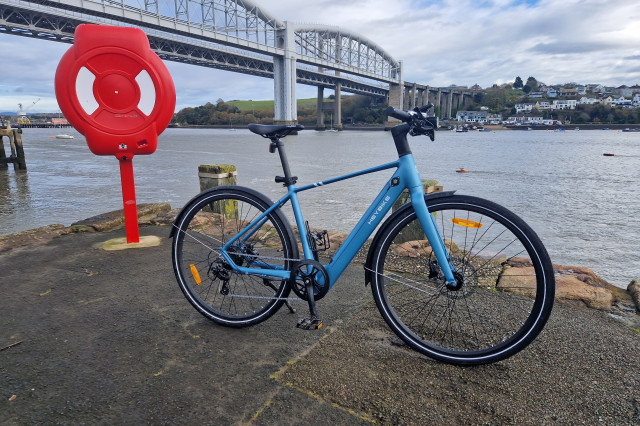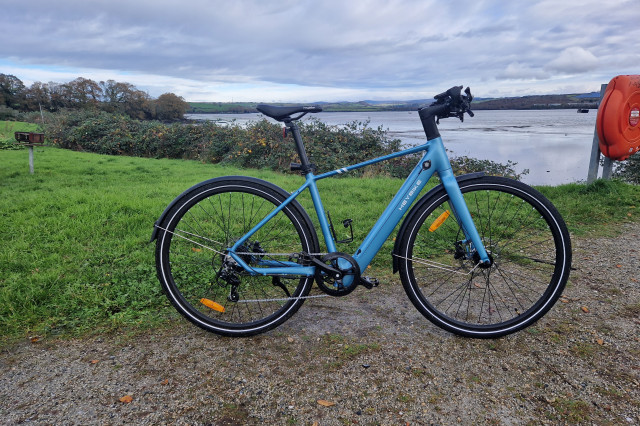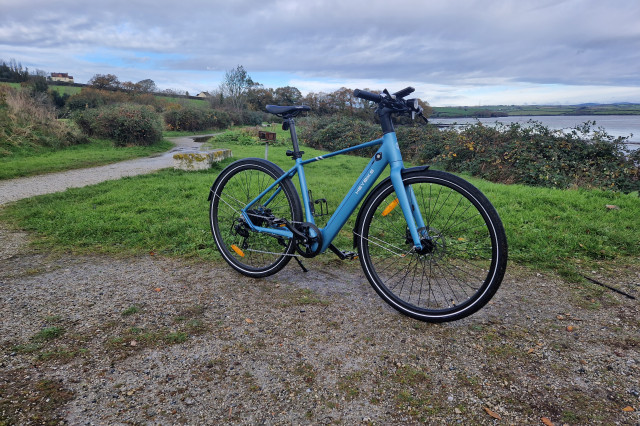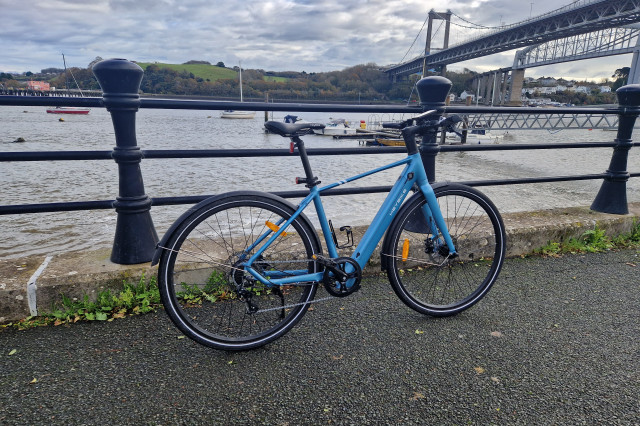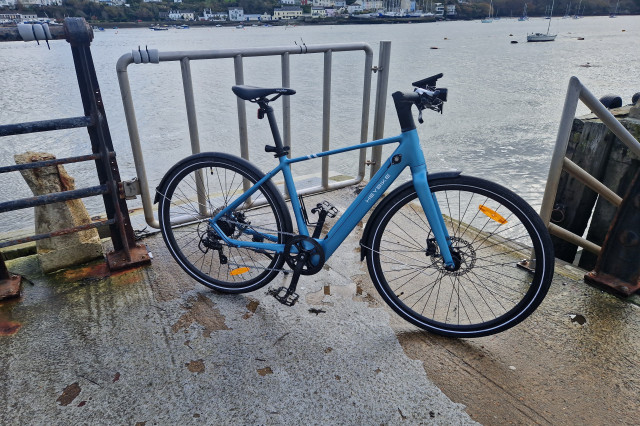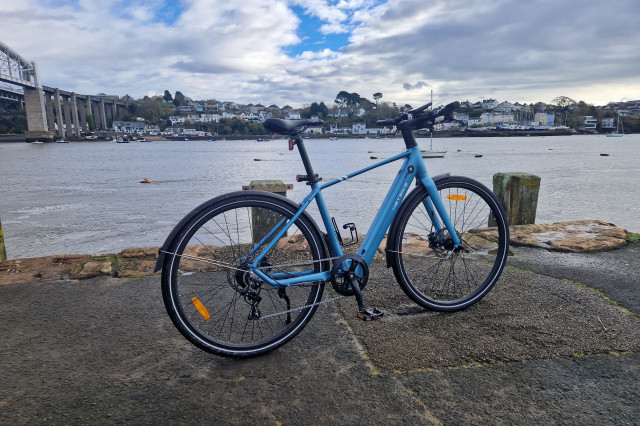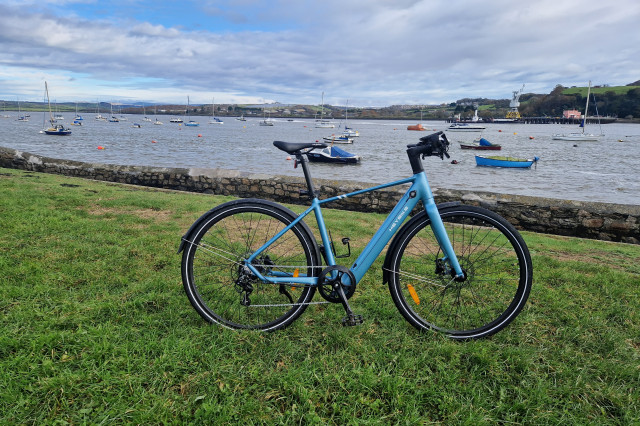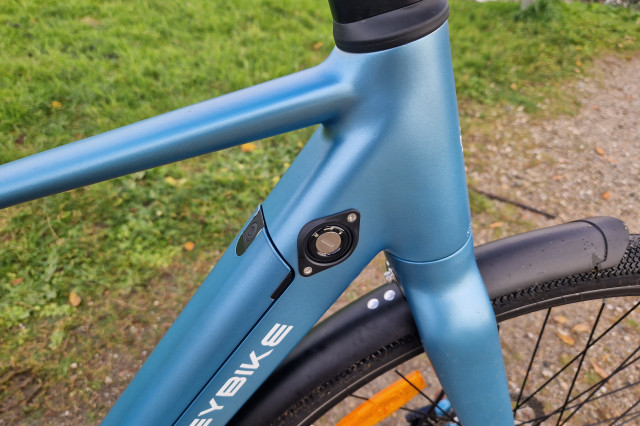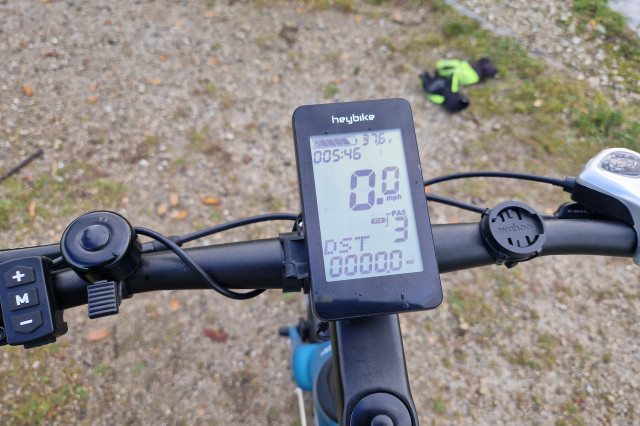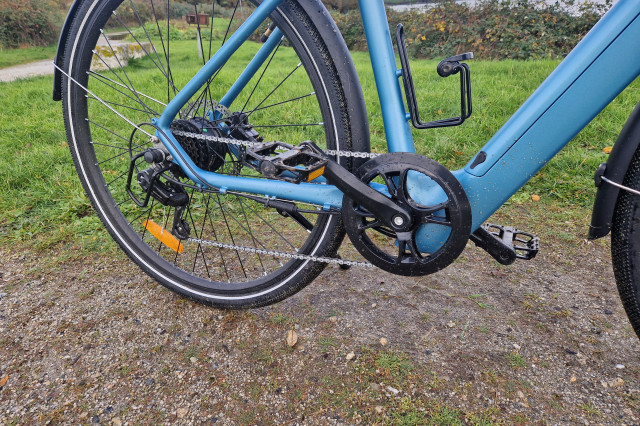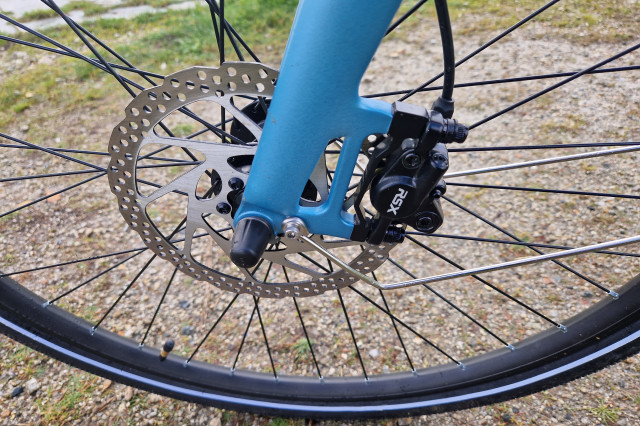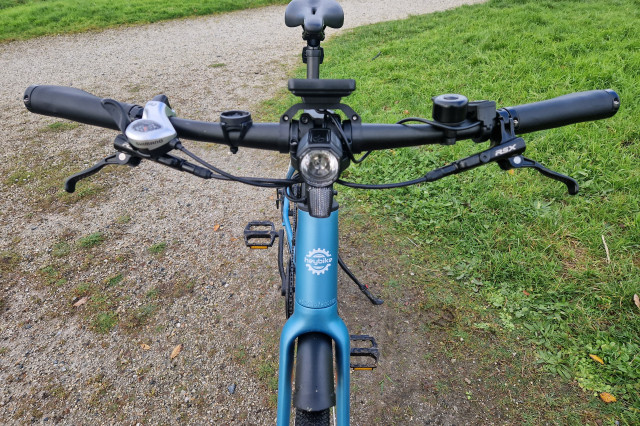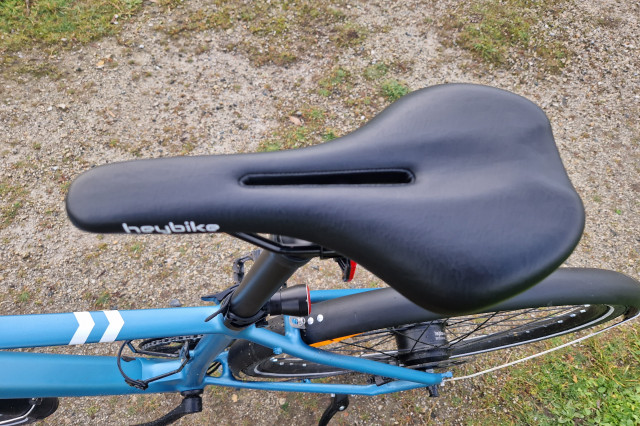Heybike EC 1
Overview
- Lovely frame
- Hydraulic brakes
- Comfortable
- No torque sensor
- European brake arrangement
- EU charger
The lightweight urban e-bike sector is increasingly well catered for, but the new Heybike EC 1 ticks many of the right boxes. It features a chic, smooth weld frame, a small 250W motor and a removable battery. At a glance, you’d be forgiven for thinking it was a regular bike.
Heybike is an unfamiliar brand on UK shores but is well-established in the US. Across the pond, they’re known for a range of fat-tyre electric bikes. However, for their entry into the UK and EU markets, they’ve decided on the svelte EC 1, which is the antithesis of its Stateside cousins.
Weighing in at 18.3 kg and with an RRP of £1,768, it’s in competition with the likes of the popular Tenways CGO600 and Fiido C21.
The Heybike EC 1 is available in a regular or step-through frame and is marketed as an urban commuter e-bike. I’ve been using it regularly over the last three weeks to see how it copes with a typical British winter onslaught of heavy rain, cold mornings and filthy roads.
The ride
For the initial test ride, I took it for a 25-mile jaunt up to Dartmoor. First impressions were favourable - it feels like riding a regular (albeit heavy) hybrid bike.
The first couple of miles were fairly flat, so I spent most of that time above the 15.5mph assist cut-off point and there was no noticeable pedalling resistance.
I found the EC 1 comfortable to ride. It has a rigid frame with an alloy fork, and I was pleasantly surprised by the general ride quality. It can feel a little jarring if you hit a pothole or sunken drain cover, but the 700x40c tyres do a fairly decent job of removing the sting. It has a nice, upright riding position, the handlebars have a subtle sweep back, and the saddle was a good fit.
The Heybike uses a cadence sensor for pedal assist, and there is a slight delay of about half a pedal rotation before the motor kicks in. Once the assist starts, it builds quickly, providing a good boost to your pedalling effort. The assist is smooth and responsive, although it lacks the natural feel provided by a torque sensor.
The EC 1 has three levels of assistance, and the speed is limited in the first two. This means you need to use Level 3 to get the full 15.5mph maximum assisted speed. Apart from that, performance is as expected from a 250W hub motor. It produces a good level of assistance, and although it's audible, the noise is never intrusive.
The Heybike has a relatively small 360Wh battery, but as the bike is reasonably lightweight, you shouldn’t need to rely on the motor as much. After the initial 25-mile test ride, the display showed 40% power remaining, which is respectable for a battery of that size.
Regarding hills, the Heybike does a good job of getting you up moderate climbs without breaking into a sweat. Typically, with a small hub motor, steeper hills are more of a challenge, and once the gradient gets above 10%, you’ll need to add more of your own pedalling effort.
The handling is predictable. As I made my way down a wet and twisty descent at 30mph, the bike didn’t complain, and the tyres offered a decent level of grip. In the city, it feels nimble and is good for filtering through traffic.
Specification
The frame is well-finished and has an air of quality about it. The gear and brake cables are internally routed at the stem, giving the Heybike a polished look. Smooth welds finish off the package, and it was nice to see that these had been extended to the (often) overlooked bottom bracket area. The paintwork looks nice, but it marks easily - I scratched it just by resting it against another bike in my shed.
That Heybike-branded 250W motor is smooth and performs well enough, but doesn’t have the refinement of the Mivice motor fitted to the Tenways CGO600 and Fiido C21.
A large LCD screen straddles the stem, which is clear and easy to read. The display has good functionality, but I prefer my e-bike displays to be smaller and more discreet - this one is neither.
The Heybike EC 1 uses a 360Wh (36v 10Ah) removable battery that fits flush with the frame. It’s colour-coded with the rest of the bike, which is a nice touch. Heybike claims a range of between 50 and 62 miles, which is unrealistic for real-world riding. I managed to squeeze 30 miles from a charge (with the battery indicator flashing empty) in full power mode.
The Heybike has a Shimano Tourney 7-speed derailleur with a thumb shifter, a 14-28 freewheel, and a 42t front chainring for gearing. Although this is an entry-level drivetrain, the gears shifted well throughout the testing period.
The RSX hydraulic brakes with 160mm rotors were quite impressive. I’m unfamiliar with this brand, but their performance was consistently good in the wet weather. It rained daily during testing, and they provided good modulation and stopping power. It should be noted that the brakes are set up for the European market, so the right is the rear and the left is the front. This can take a bit of getting used to. Alternatively, you could visit your local bike shop and get them swapped over.
The wheels surprised me, particularly the front wheel. It didn’t have a quick release - instead, it had 15mm nuts with rubber end caps. From an aesthetic perspective, this didn’t look good, but the front bearing was incredibly smooth, and the wheel spun freely when off the ground. The Chaoyang Flying Diamond 700x40c tyres have a gravel-type tread pattern and were resistant to punctures throughout the three weeks of riding.
The finishing kit is all decent quality - there’s an alloy seat post and an alloy handlebar, which has a subtle rise and back sweep.
The saddle is firm and has a flat profile with a pressure relief channel. I found it comfortable, although some riders might prefer something with more padding. Accessories include full-length mudguards, a front light and a kickstand.
Sizing
The Heybike is available in two sizes - medium and large. The bike used in this test was a medium frame. I’m just over 6ft tall and found it to be a good fit, except for the toe overlap on the front wheel.
The seat post has a lot of adjustment, but you can’t fit a different stem due to the internal cable routing.
Value and competition
At the time of writing, the Heybike EC 1 is available for £1,199, although its regular price is £1,768. The main competitors in this price bracket are the Fiido C21 (£1,635) and the Tenways CGO600 (£1,599) mentioned above, as well as the Estarli E28 (£1,625).
The Fiido is of similar weight but uses a torque sensor. However, the battery is smaller at 208Wh and can’t be removed. The popular Tenways CGO600 uses a torque sensor with a 252Wh battery that cannot be removed and a single-speed drivetrain with a low-maintenance Gates Belt Drive. The Estarli has a slightly larger battery (375Wh), but again non-removable.
Conclusion
I think Heybike has done an excellent job with the EC 1. Despite a few minor niggles, I feel it’s a good lightweight e-bike option. It’s comfortable, there is enough power for most riders, and the battery can be removed for recharging. It’s a versatile all-around e-bike that’s equally at home on tarmac, gravel, and light forest trails.
2 comments
Got to love how 18.3kg is now considered lightweight.
Assist levels set by speed seems unusual. That's not how I think.
Is one set to walking pace so it can be a mobility aid?
I have never heard of Chaoyang tyres? Are they a reliable brand, as they should be on an £1800 bicycle?
